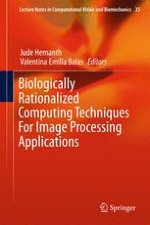This book introduces readers to innovative bio-inspired computing techniques for image processing applications. It demonstrates how a significant drawback of image processing – not providing the simultaneous benefits of high accuracy and less complexity – can be overcome, proposing bio-inspired methodologies to help do so.
Besides computing techniques, the book also sheds light on the various application areas related to image processing, and weighs the pros and cons of specific methodologies. Even though several such methodologies are available, most of them do not provide the simultaneous benefits of high accuracy and less complexity, which explains their low usage in connection with practical imaging applications, such as the medical scenario. Lastly, the book illustrates the methodologies in detail, making it suitable for newcomers to the field and advanced researchers alike.
